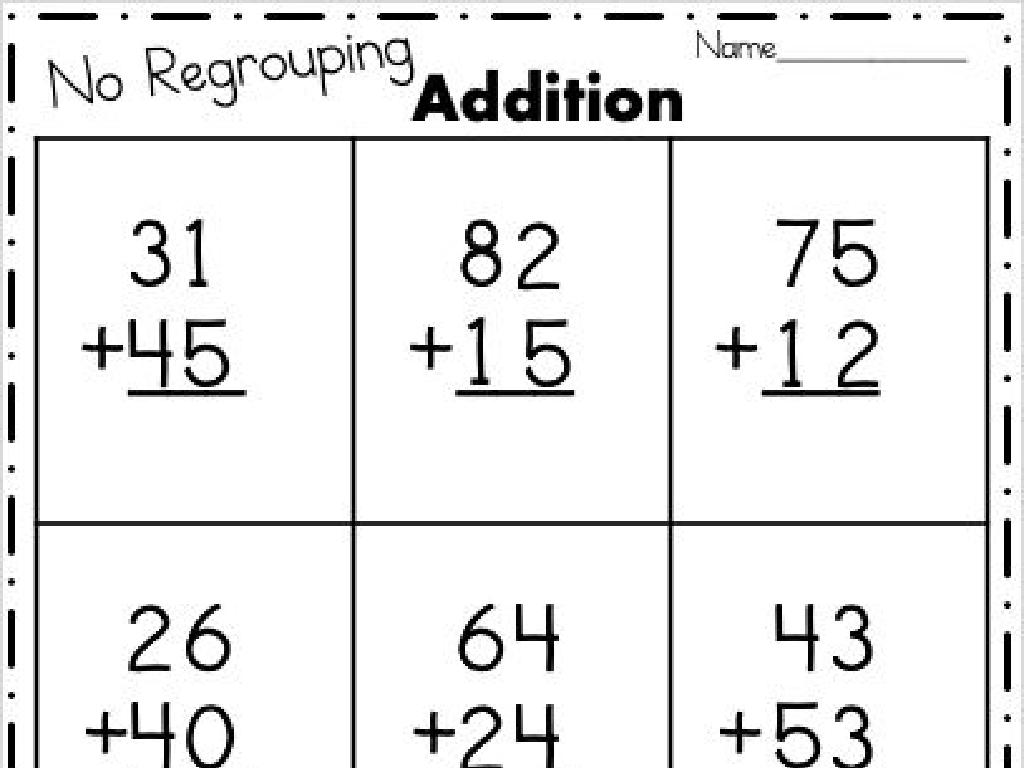Name Countries Of Asia: Region 2
Subject: Social studies
Grade: Sixth grade
Topic: Asia: Geography
Please LOG IN to download the presentation. Access is available to registered users only.
View More Content
Exploring Asia: Region 2 Geography
– Asia: Earth’s largest continent
– Region 2: Countries overview
– Includes China, India, and more
– Unique features of Asia
– Diverse climates, cultures, and landscapes
– Why study Asia’s geography?
|
This slide introduces students to the vast and diverse continent of Asia, with a special focus on Region 2. Begin by discussing Asia’s size and the fact that it’s the largest continent on Earth. Highlight the key countries in Region 2, such as China and India, and discuss their significance. Explore the unique aspects of Asia, including its wide range of climates from tundra to tropical, its rich tapestry of cultures, and its varied landscapes from the Himalayas to the Gobi Desert. Emphasize the importance of understanding Asia’s geography in the context of global studies, as it is home to more than half of the world’s population and has significant cultural, economic, and political influence.
Exploring Asia: Region 2 Countries
– Identify countries in Region 2
– Includes countries like Vietnam, Laos, and Cambodia
– Diversity: Languages and Cultures
– Multiple languages spoken, rich cultural heritage
– Explore diverse landscapes
– From mountains to rivers, a variety of terrains
– Quick facts: Population and Area
– Learn about the size and population of these countries
|
This slide aims to provide an overview of the countries in Asia’s Region 2, focusing on their diversity and key characteristics. Start by identifying the countries that are part of this region, such as Vietnam, Laos, and Cambodia. Highlight the rich tapestry of languages and cultural practices found across these nations. Discuss the varied landscapes, which may include mountains, rivers, and other geographical features. Conclude with some quick facts about the population sizes and the total area of the countries to give students a sense of scale. Encourage students to think about how the diversity in language, culture, and geography can influence the lives of people in these countries.
Exploring Asia: Region 2’s Geography
– Mountains, rivers, and plains
– Home to the Himalayas and the Mekong River, fostering rich biodiversity.
– Climate’s impact on the region
– Monsoons and dry seasons dictate agricultural practices and lifestyle.
– Region 2’s diverse environments
– From lush rainforests to arid deserts, the region supports varied wildlife.
– Abundance of natural resources
– Rich in minerals, forests, and fertile land, crucial for the economy.
|
This slide aims to give students a comprehensive overview of the physical geography of Asia’s Region 2. Highlight the significance of major mountain ranges like the Himalayas, which not only influence the climate but also are the source of major rivers like the Mekong, providing water for millions. Discuss how the climate, with its monsoon rains and dry spells, affects the way people live and work in the region. Emphasize the diversity of environments found here, from rainforests to deserts, and how this biodiversity is a vital part of the region’s natural wealth. Lastly, touch upon the natural resources such as minerals, timber, and fertile lands that are abundant in the region and form the backbone of its economies. Encourage students to research specific countries within Region 2 to discover how these physical features and resources impact their development and culture.
Cultural Highlights of Asia: Region 2
– Explore regional traditions
– Festivals, attire, and customs unique to Region 2
– Discover famous landmarks
– Historical sites and modern marvels in Region 2
– Savor the local cuisine
– Popular dishes and ingredients from Region 2
– Celebrate diverse festivals
– Seasonal and religious celebrations across Region 2
|
This slide aims to give students a colorful overview of the rich cultural tapestry that makes up Asia’s Region 2. Discuss various traditions and celebrations that are unique to this area, highlighting how they contribute to the region’s identity. Introduce students to both ancient landmarks, like temples and historical ruins, as well as modern architectural feats. Dive into the cuisine of Region 2 by discussing staple foods, traditional dishes, and the influence of geography on the local diet. Finally, talk about the various festivals celebrated in Region 2, explaining their significance and how they reflect the values and history of the people. Encourage students to compare and contrast these cultural elements with their own, fostering an appreciation for diversity.
Economic Activities in Asia: Region 2
– Agriculture’s role in the economy
– Farming is a key livelihood for many.
– Industry and technology impact
– Factories and innovation drive growth.
– Trade and commerce dynamics
– Exports and imports link countries globally.
– Challenges and future opportunities
– Balancing development with sustainability.
|
This slide explores the various economic activities in Asia’s Region 2, emphasizing the importance of agriculture, industry, and technology as the pillars of the economy. Students should understand how agriculture supports the livelihoods of a large population, while industry and technology are crucial for economic growth and development. Trade and commerce are also vital, as they allow for the exchange of goods and services with other countries, enhancing global connections. Finally, discuss the challenges faced by the region, such as environmental concerns and economic disparities, and the opportunities that lie ahead, including technological advancements and sustainable development. Encourage students to think about how these economic activities affect the lives of people in the region and their own lives as consumers.
Map Activity: Countries of Asia – Region 2
– Locate each country in Region 2 on your map
– Label the countries and their capital cities
– Research and note one interesting fact per country
– For example, the Great Wall for China, or the cherry blossoms of Japan
– Prepare to present your findings in class
|
This class activity is designed to help students learn about the geography of Asia’s Region 2 through an interactive map exercise. Students will use maps to identify and label each country within the specified region, along with their capital cities. Additionally, they are tasked with finding and noting one interesting fact about each country, which could be related to culture, history, or a significant landmark. This activity will not only familiarize students with the geography of Asia but also encourage them to engage with the unique aspects of each country. For the teacher: provide maps of Asia, ensure students have access to research materials, and guide them on how to present their findings effectively. Consider breaking the class into groups and assigning different countries to each group to encourage teamwork.
Exploring Asia’s Region 2: Review & Discussion
– Recap main countries in Region 2
– Countries like Thailand, Vietnam, and Malaysia
– Discuss physical features’ impact
– Mountains, rivers, and climate shape lives
– How culture & economy are connected
– Traditions, food, and jobs relate to geography
– Open floor for Q&A session
|
Begin with a brief review of the main countries in Asia’s Region 2, focusing on Thailand, Vietnam, and Malaysia. Discuss how the physical geography of these countries, including prominent features like the Mekong River and the region’s tropical climate, influences the culture and economy. For example, the abundance of rivers supports a thriving fishing industry, and the climate allows for year-round agriculture, which affects local diets and cultural practices. Encourage students to think about how geography can shape a country’s identity and livelihood. Conclude with a Q&A session to address any student questions and to further engage them in the topic.
Class Activity: Explore Asia’s Region 2
– Group research on a Region 2 country
– Explore geography of the country
– Look at maps, physical features, and climate
– Learn about the country’s culture
– Discover traditions, language, and food
– Investigate the country’s economy
– Examine main industries, trade, and currency
|
This class activity is designed to engage students in collaborative research about a specific country in Asia’s Region 2. Each group will select a country and explore various aspects including geography, culture, and economy. The geography section should cover the country’s location, physical features, and climate. When researching culture, students should look into the country’s traditions, languages, and cuisine. For the economy, students should identify the main industries, trade partners, and currency. Encourage groups to use reliable sources and to create a presentation that is both informative and visually appealing. Provide a list of countries from Region 2 for the groups to choose from. Possible activities for different groups could include creating a poster, a PowerPoint presentation, or a mock interview with a ‘citizen’ of the country. Be ready to facilitate and support the students as they prepare to present their findings in the next class.






